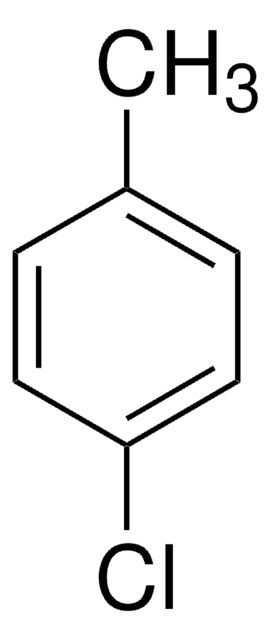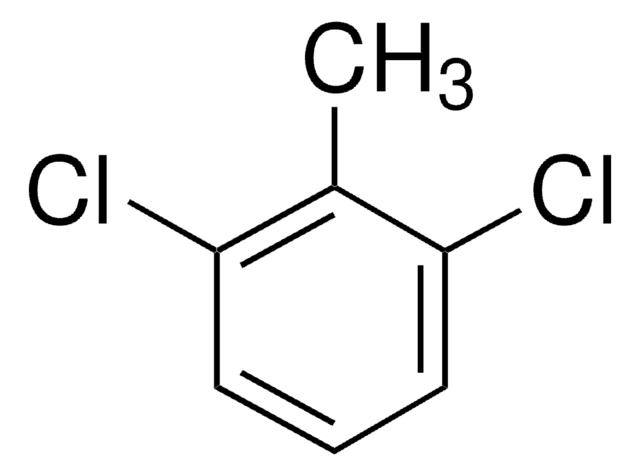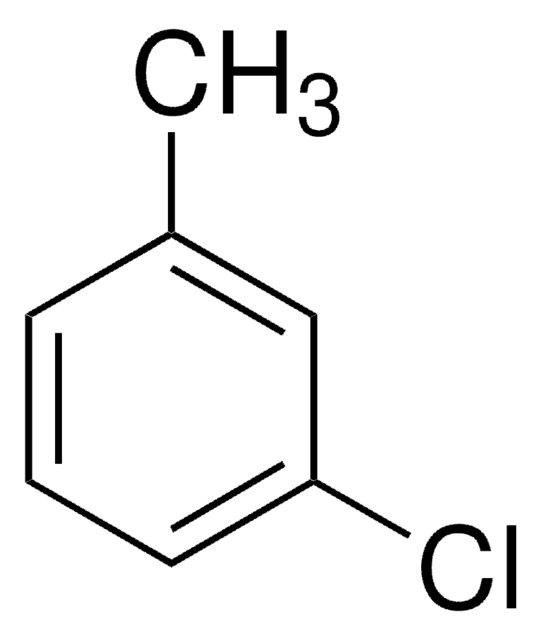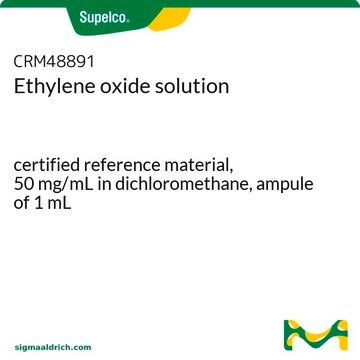145009
2,4-Dichlorotoluene
99%
Synonym(s):
1,3-Dichloro-4-methylbenzene, 2,4-Dichloro-1-methylbenzene
Sign Into View Organizational & Contract Pricing
All Photos(1)
About This Item
Linear Formula:
CH3C6H3Cl2
CAS Number:
Molecular Weight:
161.03
Beilstein:
1931691
EC Number:
MDL number:
UNSPSC Code:
12352100
PubChem Substance ID:
NACRES:
NA.22
Recommended Products
Assay
99%
form
liquid
refractive index
n20/D 1.546 (lit.)
bp
200 °C (lit.)
density
1.246 g/mL at 25 °C (lit.)
functional group
chloro
SMILES string
Cc1ccc(Cl)cc1Cl
InChI
1S/C7H6Cl2/c1-5-2-3-6(8)4-7(5)9/h2-4H,1H3
InChI key
FUNUTBJJKQIVSY-UHFFFAOYSA-N
Looking for similar products? Visit Product Comparison Guide
Related Categories
Application
2,4-Dichlorotoluene was used as an oxidant and a solvent during anaerobic catalytic oxidation of secondary alcohols by using an in situ (N-heterocyclic carbene)-Ni(0) system. It was used as growth supplement in the culture media of Ralstonia sp. strain PS12. It was used to develop a sensitive method based on solid-phase microextraction followed by gas chromatography-tandem mass spectrometry for the analysis of chlorotoluenes in water samples.
Hazard Statements
Precautionary Statements
Hazard Classifications
Aquatic Chronic 2
Storage Class Code
10 - Combustible liquids
WGK
WGK 2
Flash Point(F)
174.2 °F
Flash Point(C)
79 °C
Personal Protective Equipment
dust mask type N95 (US), Eyeshields, Gloves
Choose from one of the most recent versions:
Already Own This Product?
Find documentation for the products that you have recently purchased in the Document Library.
Customers Also Viewed
[Gas chromatographic determination of 2,4-dichlorotoluene in water].
T A Kozeĭko et al.
Gigiena i sanitariia, (3)(3), 44-45 (1988-03-01)
Omid Khakshoor et al.
Journal of the American Chemical Society, 134(6), 3154-3163 (2012-02-04)
We address the recent debate surrounding the ability of 2,4-difluorotoluene (F), a low-polarity mimic of thymine (T), to form a hydrogen-bonded complex with adenine in DNA. The hydrogen bonding ability of F has been characterized as small to zero in
Christophe Berini et al.
Chemistry (Weinheim an der Bergstrasse, Germany), 16(23), 6857-6860 (2010-05-11)
The selective, anaerobic catalytic oxidation of secondary alcohols at room temperature by using an in situ (N-heterocyclic carbene)-Ni(0) system is presented. The use of non-anhydrous, non-degassed 2,4-dichlorotoluene as both the oxidant and the solvent allows for very short reaction times
[Hygienic standards for 2,4-dichlorotoluene in reservoir water].
G V Tolstpiatova et al.
Gigiena i sanitariia, (2)(2), 80-81 (1988-02-01)
V Karunakaran et al.
Spectrochimica acta. Part A, Molecular and biomolecular spectroscopy, 95, 64-72 (2012-05-23)
The FT-IR and FT-Raman spectra of α-bromo-2,6-dichlorotoluene (αBDCT) have been recorded. The structural and spectroscopic data of the molecule in the ground state have been calculated using Hartree Fock (HF) and Density Functional Theory (DFT)/B3LYP with the standard 6-31++G(d,p) basis
Our team of scientists has experience in all areas of research including Life Science, Material Science, Chemical Synthesis, Chromatography, Analytical and many others.
Contact Technical Service












